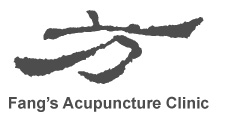
Introduction
Tui-Na, which literally means "pushing (and) grasping", is an Oriental Bodywork Therapy that has been used in China for 2,000 years. Tui-Na uses the traditional Chinese medical theory of the flow of Qi through the meridians as its basic therapeutic orientation. Through the application of massage and manipulation techniques Tui-Na seeks to establish a more harmonious flow of Qi through the system of channels and collaterals, allowing the body naturally heals itself.
Tui-Na methods include the use of hand techniques to massage the soft tissue (muscles and tendons) of the body. Acupressure techniques directly affect the flow of Qi , and manipulation techniques realign the musculoskeletal and ligamentous relationships (bone-setting). External herbal poultices, compresses, liniments, and salves are also used to enhance the other therapeutic methods.
Tuina History
The details of tuina's techniques and uses were originally documented in The Yellow Emperor's Classics of Internal Medicine, which was written about 2,500 years ago. Its popularity and recognition grew steadily to the point that by the sixth century, many traditional Chinese medical schools had incorporated tuina into their programs as a separate department. In China, tuina is currently taught as a separate but equal field of study, with practitioners receiving the same level of training (and enjoying the same professional respect) as acupuncturists and herbalists. It is also taught as part of the curriculum at every ACAOM-accredited school in the United States.
What to Expect on Your First Visit
In a typical tuina session, the client remains clothed but wears loose clothing, and sits on a chair or couch. The practitioner will ask the patient a series of questions, then begin treatments based on the answers to those questions.
Tuina practitioners may employ a variety of methods to achieve their goal. Commonly used techniques include soft tissue massage and acupressure and manipulation. Practitioners may sometimes use herbal compresses, liniments, ointments and heat to enhance these techniques.
Conditions and Contraindications
Tuina is best suited for rectifying chronic pain, musculoskeletal conditions and stress-related disorders that affect the digestive and/or respiratory systems. Among the ailments tuina treats best are neck pain, shoulder pain, back pain, sciatica and tennis elbow. However, because tuina is designed to improve and restore the flow of qi, treatment often ends up improving to the whole body, not just a specific area. There are anecdotal evidences that headaches, constipation, premenstrual symptoms and some emotional problems may also be effectively treated through tuina.
Because it tends to be more specific and intense than other types of bodywork, tuina may not necessarily be used to sedate or relax a patient. The type of massage delivered by a tuina practitioner can be quite vigorous; in fact, some people may feel sore after their first session. Some patients may also experience feelings of sleepiness or euphoria.
As with all forms of care, there are certain instances in which tuina should not be performed. Patients with osteoporosis or conditions involving fractures, for instance, should not receive tuina. Neither should patients with infectious diseases, skin problems or open wounds.
